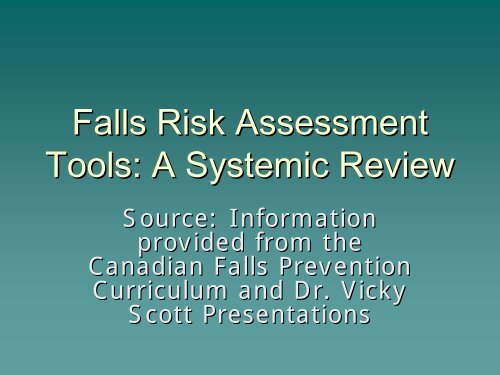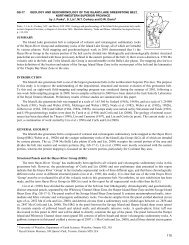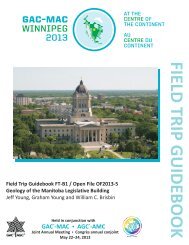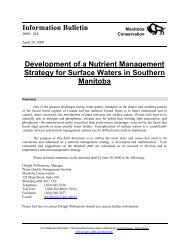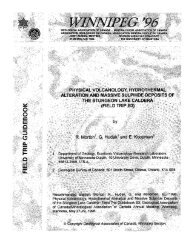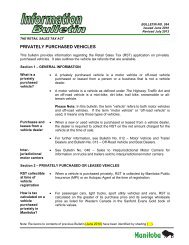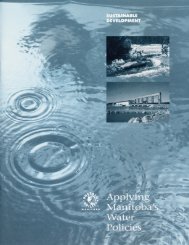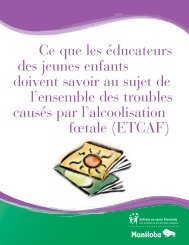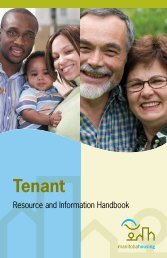Falls Risk Assessment Tools
Falls Risk Assessment Tools
Falls Risk Assessment Tools
You also want an ePaper? Increase the reach of your titles
YUMPU automatically turns print PDFs into web optimized ePapers that Google loves.
<strong>Falls</strong> <strong>Risk</strong> <strong>Assessment</strong><br />
<strong>Tools</strong>: A Systemic Review<br />
Source: Information<br />
provided from the<br />
Canadian <strong>Falls</strong> Prevention<br />
Curriculum and Dr. Vicky<br />
Scott Presentations
<strong>Risk</strong> <strong>Assessment</strong> <strong>Tools</strong><br />
<strong>Risk</strong> <strong>Assessment</strong> <strong>Tools</strong> are designed:<br />
– To help identify get those at greatest<br />
risk of falling<br />
– To tailor prevention to individual risk<br />
factors<br />
<strong>Risk</strong> <strong>Assessment</strong> <strong>Tools</strong> are either:<br />
– Multifactor in assessment<br />
– Functional mobility assessment tools<br />
2<br />
2
Three Types of <strong>Tools</strong><br />
Multifactorial<br />
Functional mobility<br />
Environmental hazard checklists
Choosing a <strong>Risk</strong> <strong>Assessment</strong> Tool<br />
<strong>Falls</strong> occur due to a loss of balance or an<br />
inability to recover balance<br />
A broad set of factors interconnect and<br />
contribute to risk<br />
<strong>Risk</strong> profiles differ for those in residential<br />
and acute settings and for those at risk of<br />
injury<br />
<strong>Tools</strong> exist for the assessment of risk in all<br />
settings
When selecting a tool<br />
consider…<br />
Your purpose<br />
Cost<br />
Ease of use<br />
Training requirement<br />
Potential for acceptance<br />
Evidence of reliability and validity<br />
Staffing needs<br />
Content consistent with evidence of<br />
known risk factors
Review of Studies<br />
Review of studies was done from<br />
1980 – July 2004<br />
– Reviewed predictive value of one or<br />
more fall assessment tools on a<br />
population of 65+<br />
– The primary outcomes: falls, falls<br />
related injury or gait balance<br />
– Only studies that used prospective<br />
validation were considered.<br />
6<br />
6
Review Literature Findings<br />
199 studies<br />
34 studies met criteria for validity<br />
and reliability of 38 tools<br />
27 of the 38 were functional<br />
mobility<br />
8 were screening tools<br />
3 were a combination<br />
7<br />
7
27 Functional Mobility <strong>Assessment</strong>s<br />
Activity based balance<br />
and gait<br />
Area of ellipse of<br />
Postural sway<br />
Berg balance scale<br />
Dynamic gait index<br />
Elderly Mobility Scale<br />
Floor transfer<br />
Five minute walk<br />
Functional reach test<br />
Lateral reach test<br />
Maximal Step Length<br />
Mean Velocity Postural<br />
Sway<br />
Mobility Interaction Fall<br />
Chart<br />
8<br />
<br />
<br />
<br />
<br />
<br />
<br />
<br />
<br />
<br />
<br />
<br />
<br />
<br />
100% Limit of stability<br />
POAM-B<br />
Postural Balances<br />
Postural Stability Tests<br />
Quantitative gait<br />
assessment<br />
Rapid step test<br />
Step up test<br />
Tandem stance<br />
Times chair stands<br />
Timed up and go<br />
Timed Walk<br />
Tinetti balance scale<br />
Tinetti balance sub-<br />
scale<br />
8
8 Screening <strong>Tools</strong><br />
Balance and self<br />
efficacy test<br />
Conley scale<br />
Fall risk assessment<br />
Fall risk screening test<br />
Home assessment<br />
profile<br />
Morse fall scale<br />
Geriatric postural<br />
screen<br />
Stratify<br />
3 Combined functional<br />
Screening<br />
Downton index<br />
Elderly fall screening<br />
Physiological & clinical<br />
predictors<br />
9<br />
9
Settings and <strong>Tools</strong><br />
Community: 14 studies/23 tools<br />
Acute: 12 studies/8 tools<br />
Long-Term care: 6 studies/tools<br />
Home support: 4 studies /4 tools<br />
10<br />
10
Findings for Review<br />
There are a number of risk<br />
assessment tools available with a<br />
reasonable amount of evidence to<br />
support their use<br />
No single tool can be recommended<br />
for implementation in all settings for<br />
all subpopulations within each setting<br />
11<br />
11
<strong>Tools</strong> With Predictive Values<br />
Community: 5 minute walk; 5 step test,<br />
CTSIB, Floor transfer, Maximum Step<br />
length, TUG ( timed up and go)<br />
Supportive Housing: Berg, Physiological &<br />
Clinical Predictors<br />
LTC Mobility Fall Chart, Area Ellipse of<br />
Postural Sway , Tinetti Balance Subscale<br />
Acute : Fall <strong>Risk</strong> <strong>Assessment</strong>: Stratify<br />
12<br />
12
Timed-Up<br />
Up-And-Go (TUG)<br />
Sit to Stand<br />
Turn<br />
Around<br />
46 cm<br />
64 cm<br />
Walk 1<br />
Slow, Stop,<br />
Turn and Sit<br />
Walk 2<br />
0<br />
1 2<br />
DISTANCE (m)<br />
3
<strong>Tools</strong> with Good Validity &<br />
Reliability<br />
Community: 5-minute Walk, 5-step 5<br />
Test,<br />
Functional Reach, Clinical Test Sensory<br />
Interaction for Balance, Floor Transfer,<br />
Maximum Step Length, Timed-Up<br />
Up-and-Go<br />
Test<br />
Supportive housing: BERG Balance,<br />
Physiological and Clinical Predictors<br />
Residential: Mobility Fall Chart, Area<br />
Ellipse of Postural, Tinetti Balance<br />
Subscale<br />
Acute: Schmid Fall <strong>Risk</strong> <strong>Assessment</strong>,<br />
STRATIFY, Morse Fall Scale
Selection Considerations<br />
What is your work setting and target population<br />
What fall risk assessment tool do you use now<br />
and how was it selected<br />
What is the purpose of the tools and what is done<br />
with the info gathered<br />
How do you know if these tools are reliable and<br />
valid for intended purposes<br />
What would you change in your practice to<br />
improve your ability to predict and prevent falls<br />
What information or support do you need to<br />
improve current risk assessment and prevention<br />
practices.<br />
15<br />
15
References<br />
Dr. Scott “ A Systemic Review of <strong>Assessment</strong><br />
<strong>Tools</strong> for Fall <strong>Risk</strong>” BC Injury Research and<br />
Prevention Unit<br />
University of British Columbia<br />
References: For slide on <strong>Tools</strong> with Good predictive<br />
Values;<br />
Berg 1992, Boulgarides 2003; Cho 2004; Duncan<br />
1992; Lord 1998; Lundin Olsson 2000; Murphy<br />
2003; Oliver 1997; Oliver 2004; Perell 2001;<br />
Schmid 1990; Thapa 1996.<br />
16<br />
16


